#Raetia
Video
undefined
tumblr
New Banner Feature:
Prior to domination by Rome, the Alpine region contained various populations which had a complex, obscure, and ethnically-multilayered history.
2 notes
·
View notes
Text
9-Euro-Ticket-Tours: Regensburg II - Castra Regina
9-Euro-Ticket-Tours: Regensburg II – Castra Regina
Castra Regina war ein römisches Legionslager. Errichtet wurde es für die dritte italische Legion im Jahr 175 als Hauptquartier, wo die obere Donau in ihrem Verlauf den nördlichsten Punkt erreicht. Castra Regina bestand aus dem Legionslager, aus der zugehörigen Zivilstadt, einem großen Friedhof und aus einigen Heiligtümern und Tempelanlagen. Die sichtbaren römischen Baureste des Lagers sowie die…
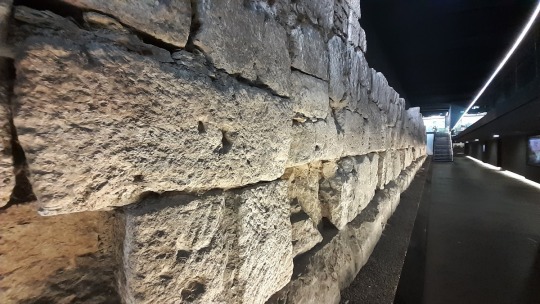
View On WordPress
#Augsburg#Augusta Vindelicum#Castra Regina#Donau#Donaulimes#Limes#Mark Aurel#Porta Praetoria#Raetia#Römer#Römerkastell#Römerlager#Regensburg#Rom#UNESCO Welt-Kulturerbe#Unesco Weltkulturerbe#UNESCO-Weltkulturerbe
0 notes
Note
NOOOO NOT KONIG AS A SPARTAN/GREEK WARRIOR I CANNOT HAVE THAT IMAGE IN MY BRAIN I STILL NEED TO FUNCTION ON THE DAILY DAMNIT😭😭😭
I am a sucker for the warrior claims his spoils of war trope, the whole achilles/briseis from the troy movie vibes💕😫👌🏻 but with a twist 👀
König, the infamous Germanic warrior and beast of a man who has a unique station as commander in the troops of the romans (or something??? lmao don’t @me my brain rot is not historically accurate) because he possesses the perfect balanced mixture of inhuman strength and a cunning strategic mind. Hacking and slashing his way through battle after battle, some call him Ares, the God of War, because they’re convinced that whatever must be under that helmet and hood can’t be an actual human being. He seems to be living and breathing for war and the shedding of blood. That is until during one of his battles he finds himself in the raided temple of Artemis, face to face with a temple maiden who isn’t raped and pillaged by his men. Whether it’s a curse or a blessing from the Gods, he doesn’t know but he falls, and he falls hard for her. Blood is pumping to his heart, which is about to beat its way through his chest, and racing down to his dick which is even harder than after a successful battle. “An Engel” he mutters to himself, and that’s the first time the God of War takes a spoil of war, his very own temple maiden who from now on will only worship him and him alone.
König would be such a hot Spartan warrior/Greek demigod but PLEASE, you have to listen and listen carefully because… König could easily be a prominent figure in the Roman army! They had auxiliary units, Romans used “foreign” warriors all the time, Gauls and German/ic people and whatever, that’s the whole idea behind their expansion idea: to fatten their army with new recruits to push their campaigns and get more slaves to support their crazy economy etc etc
So König could be situated in say for example Germania Superior/Inferior, Raetia or Noricum auxiliary unit, I don’t know what Romans called Austria back then and if they had a separate aux. unit for them, I need to do some googling, if someone knows more about this please correct me! But *grabs you by your bra straps or shirt or whatever* you need to listen, Romans didn’t send their Auxilia to the troops’ native lands which means König would not be posted in Germania/whatever Austria was called BUT he could fight in basically any other area, and get his captive girl from some other bloody sexy violent awesome campaign!!! (Lol why am I so into this idea of him capturing some poor girl into his tent and having his way with her… I’m sorry I need to straighten my skirt and sit pretty with my knees pressed tightly together, nothing to see here, just sippin’ my tea)
No but srsly, NO, now I have to write this. Brb ->
186 notes
·
View notes
Photo

Legio XXI Rapax
Legio XXI Rapax was a legion of the Roman army whose name name "Rapax" means "rapacious" or "greedy". It is not clear when the legion assumed this name; it may or may not be the same 21st legion Julius Caesar (100-44 BCE) formed before his Gallic Wars and the 21st commanded by Mark Antony (83-30 BCE). Roman emperor Augustus (r. 27 BCE - 14 CE) also formed 21st.
In his Histories, the Roman historian Tacitus (l. c. 56 - c. 118 CE), who reportedly commanded the Rapax legion from 89 to 92 CE, called it "a corps of old and distinguished renown." (II. 43) Aside from its participation in a mutiny in 14 CE, the Legio XXI Rapax served with distinction at the First Battle of Bedriacum, at the Battle of Rigodulum during the Batavian Revolt, and at Vetera (Old Camp) before it was massacred by the Sarmatians in Dacia in 92 CE.
The Legion’s Formation
Early legions were identified by a number, not a name. So, the legion of both Caesar and Octavian may or may not have been the legion that later became known as XXI Rapax. There is some indication that Octavian retained a 21st that served with him at the Battle of Actium against Antony and Cleopatra in 31 BCE, and there is evidence that he later formed a 21st legion for his conquest of the Alps and the Cantabrian campaigns in Hispania (27-19 BCE).
After 15 BCE, the 21st was stationed in Raetia situated on the Danube River. In 6 CE, it was in preparation to be part of the Roman commander and future emperor Tiberius’ (r. 14-37 CE) abandoned campaign against the Marcomanni. After Publius Quinctilius Varus lost three legions in the Battle of Teutoburg Forest in 9 CE, Legio XXI Rapax was transferred to the Lower Rhine at Vetera (modern-day Xanten), sharing the fortress with Legio V Alaudae. After helping suppress the Pannonian Revolt, the 21st took part in Germanicus’ campaign against the Chatti in 14 CE.
Continue reading...
25 notes
·
View notes
Text
So where *is* Tassing, actually?
Obviously it’s nowhere. But actually, it’s also several specific places in a specific area.
As someone who lives and has lived in several parts of Oberbayern, I'm so tickled by placing Tassing on a map. While trying to find a region it would fit in with all the clues the game gives, I also found several monasteries that probably contributed to the way Kiersau was written and created.
Names
Tassing fits a common naming scheme in Oberbayern. Places with an -ing name in Austria and Altbayern (roughly congruent with the present-day administrative districts Upper Bavaria, Lower Bavaria and Upper Palatinate) were founded in a specific time frame, the Baiuvarian Settling of the Alps. Up until the 7th century CE, the alpine landscape was inhabited by slavs, but from the 7th to 9th century, the Baiuvarii, a germanic group of people, moved into the area and ended up either displacing or integrating the slavic people into their own society.
Examples of Baiuvarian -ing names in Upper Bavaria include Pasing (With the people of Paso/Paoso/Poso/Poaso), Menzing (With the people of Menzo) or Poing (With the people of Piuwo). Tassing might have been re-settled, founded or just be associated with a man named Tasso, and should be located somewhere in Altbayern.
Kiersau is a strange name to me and finding an etymologically-based interpretation, like for Tassing, is harder. (In general, trying to find etymologies for place names is often more educated guessing than anything else.) The Bavarian meaning of Au (or Aue) is a flat piece of land with meadows and forests located near a river (also: floodplain). The problematic part is Kiers. I'm choosing to put it down as Kirsche, cherry. Why? Well, cherry trees were brought across the Alps by Romans, and the Roman past of Kiersau and Tassing is important to the story.
It might also just be a reference to Hirsau, a famous Benedictine monastery in the Black Forest.
None of the first or last names of the peasants, merchants or craftsmen in Tassing give any kind of hint as to where the place is located. Names like Bauer (farmer), Gertner (gardener) or Zimmermann (carpenter) are extremely common, and the more uncommon ones, like Alban, don't help narrowing it down either.
Area
We get one look at an Early Modern map of Europe, with a few mountain ranges, rivers, some of the most siginficant trade roads, and Tassing marked on it. We know that Tassing is part of the Prince-Bishopric of Freising in 1518 and borders directly on Tyrolia. We know it's in Bavaria, which I'm deciding to identify as the Bavarian territory of the Holy Roman Empire. I'm not getting into the true borders of Bavaria on my overly researched Pentiment post. We also learn that one of the Roman trade routes, possibly relateed to salt, was built to run past Tassing, and that Tassing is located somewhere in the province of Raetia. To identify and overlap all these areas, I have committed a horrible cartographic crime in Photoshop!
I have marked Raetia in yellow, the Roman roads in red, the Prince-Bishopric in brown and the Bavarian territory in blue. This first map shows these areas in a European context.

This one is a closer shot of the whole possible location of Tassing. Now, you might have noticed a little red dot in the lower right, outside of any of the possible areas, right there in Eastern Tyrolia?

Unfortunately, that is where the Pentiment map placed Tassing. Now, the in-game map is mirroring many a Early modern maps (I'm just glad they put a modern North-South axis on it, ngl), and is. Not Very Reliable. This part of Austria cannot be interpreted as Upper Bavaria by even the most lenient mapreaders, and I am electing to ignore it. Sorry.
I’m also locating Tassing west of Munich, not east, because I’m too familiar with the area around Rosenheim/Wasserburg and I’m just not getting Tassing vibes, even though Perchtenläufe are far more common today in the area.
Anyway, on to the last map. You'll notice there's a nice Roman road leading through the big pink area west, leading north towards Augsburg, and a second to the east that crosses into non-Freising territory and then passes (or crosses, my Roman roads map reference isn't super exact) a Freising enclave.
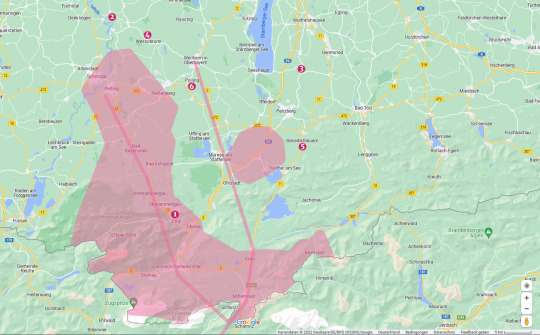
When I first zoned into this map, I got really excited, because there IS a Benedictine monastery on the West road! Kloster Ettal - which is unfortunately mostly famous for a sexual abuse scandal in the Catholic boarding school that's part of the monastery. Yikes.
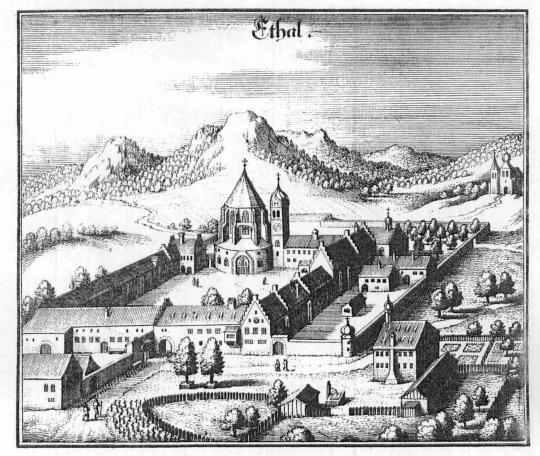
Kloster Ettal (1)
It was founded in the 14th century, so rather late, by Emperor Ludwig IV. The sanctuary features a small marble Madonna. Ettal remained rather unimportant until the 18th century.
Pro: Right next to a Roman road, close to a small river, securely inside my possible location area and located on a hill.
Con: Founded too late and not by a person comparable to the foundress of Kiersau. Not culturally significant before or during the time of Pentiment. No reference to any strange reliquiaries.

Epfach (2)
This is a small village near Denklingen. It's not significant for having a monastery, because there is none. However, Epfach used to be called Abodiacum, and it was located at an important intersection between the Via Claudia and the salt road between Salzburg and Kempten. Since the fall of the Roman Empire, it has lost meaning, and today Epfach is a village with a rich past. The coat of arms depicts a roman lamp with the Chi Rho, emphasizing the merging and mixing of pagan Roman and Christian influences in the area. There have also been several archeological finds, among them the Venus of Epfach, and you can visit a Nymphaeum near the school.
I'm not rating this one pro and con, since Epfach doesn't have a monastery. However, I think the area may have been one of many inspiring places in Upper Bavaria that went into the creation of Tassing. I was especially tickled by the Nymphaeum and the murals that are on exhibit in the former fire station.

Beuerberg (3)
A double monastery, founded around 1120 by a local Noble, Berta von Iringsburg and her sons. It was widely known for its library and school, and it was ravaged by fire several times, which also destroyed parts of the library.
Pro: Founded by a woman, double monastery, a history of fires.
Con: Not a Benedictine monastery, not in the target area, most places burn down over the course of 800 years, and also I literally added it exclusively because my grandparents used to live here.
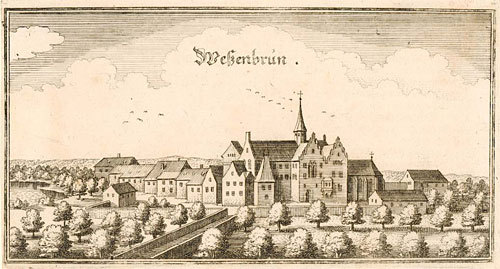
Wessobrunn (4)
Originally founded in 753 by Duke Tassilo III. near another Roman road, it was presumably the proprietary monastery of a family by the name of Wezzo, who according to legend led Tassilo to a spring he had dreamed of. The monastery was pillaged by Hungarians in 955 and rebuilt in 1065. A recluse, Diemut, a famous scribe, worked here after the monastery was rebuilt, although she wasn't part of an order. Wessobrunn became a double monastery in 1130 and burned down in the early 13th century, once again being rebuilt. It became known for its library, and as a local parton of art, especially stucco in the 18th century.
Pro: Double monastery of Benedictines, located on a hill, had a famous female scribe and library, history of destruction by fire. Also, Tassilo could have inspired a place name like Tassing.
Con: Never had a scriptorium, not in the target area, actual story of Tassilo founding it is considered ahistorical by most historians.

Benediktbeuern (5)
Located at the Via Raetia, this monastery was founded once again by Tassilo III. and was gifted, among other things, a salt mine in Tyrolia and several villages. It received an arm reliquiary of St. Benedict in the late 8th century, and head reliquiaries of the martyr Anastasia. Benediktbeuren was a double monastery until the 14th century, with the women's convent located north of the men's convent. Like Wessobrunn, Benediktbeuren was destroyed by Hungarians and rebuilt. Before and after this event, the monastery was home to a famous scriptorium, a famous library and it also had a parish church dedicated to Mary close to the monastery itself. The main part of the monastery was destroyed by a fire in 1490 and then rebuilt.
Pro: Double monastery of Benedictines, famous scriptorium and library, connection to Tassilo, parish church dedicated to Mary, lead by a man called Matthias in the early 16th century, destroyed by fire, a hand reliquary and ownership of a salt mine.
Con: The salt mine was days away, not in the target area, located on a plain.

Polling (6)
Founded as a Benedictine monastery in the late 8th century, once again connected to a myth of Duke Tassilo III. In this one, he's hunting and spots a doe that's scratching the ground. Digging up the spot, he finds three crosses and other treasure, and decides to build a monastery there. Polling was also destroyed by Hungarians, and was a a double monastery until 1300, when the nuns moved to Benediktbeuren. Since the early 12th century, Polling was an Augustine monastery and home to an important school. It also had lots of pilgrims coming in for the holy cross.
Pro: Double monastery, located next to one of the Roman roads, parallel name to Tassing and connection to Tassilo, the doe
Con: Not in the target area, not a Benedictine monastery, not known for a scriptorium.
Conclusio
You might ask yourself now, well! What was all that for? And the answer is, of course, to show how realistic and at the same time completely fantastic Kiersau and Tassing are. You can find something of Pentiment's locations in all of the places I've mentioned, and yet none of them are a perfect fit, because the story that Pentiment tells needs the combination of all these things to work.
There's no one place that Tassing mirrors, but I think my favorite find were the many monasteries founded by Tassilo, and the connection of Tassing via the place name - With the people of Tassilo. I love how closely the Roman history of Upper Bavaria, especially Epfach, is picked up, fractured and then condensed in Pentiment. I might write a follow-up on this about the local Pagan practices that we see from Ottilia, Sick Peter and Ursula, but I think I'm a bit too cynical to write about those in a fun way.
Sources:
Etymologies:
Senseless searches on Wikipedia and Wiktionary.
Map of Raetia:
https://de.wikipedia.org/wiki/Raetia#/media/Datei:Droysens_Hist_Handatlas_S17_Germanien.jpg
Roman roads in Germany:
https://www.altwege.de/roemer-und-kelten/interaktive-karte.html (Bernhard Schwade)
Bishoprics in Germany:
https://www.historisches-lexikon-bayerns.de/Lexikon/Bistumsorganisation (map by Sonja Schweiger)
Map of Europe: google babey
History of the monasteries:
https://www.hdbg.eu/kloster/ and a wide array of the monastery websites, Wikipedia and Wikimedia.
Ettal: https://de.wikipedia.org/wiki/Kloster_Ettal#/media/Datei:Ethal_(Merian).jpg
Epfach: https://commons.wikimedia.org/wiki/File:Hirte_mit_Schafen_-_r%C3%B6mische_Plastik_in_Abodiacum_(Epfach),_2020.jpg
Beuerberg: https://bildsuche.digitale-sammlungen.de/index.html?c=viewer&bandnummer=bsb00063022&pimage=678
Wessobrunn: https://bildsuche.digitale-sammlungen.de/index.html?c=viewer&bandnummer=bsb00063022&pimage=644
Benediktbeuern: https://api.digitale-sammlungen.de/iiif/image/v2/bsb10802259_00025/full/full/0/default.jpg
Polling: https://commons.wikimedia.org/wiki/File:Wening_Polling.jpg
360 notes
·
View notes
Text

Roman Coin - Gold aureus of Tiberius
C. AD 14-37
Obverse: portrait of Tiberius. Reverse: seated woman holding a sceptre and branch, possibly to be identified as Livia, wife of Augustus and mother of Tiberius, shown as a personification of Peace.
Tiberius Caesar Augustus (16 November 42 BC – 16 March AD 37) was the second Roman emperor. He reigned from AD 14 until 37, succeeding his stepfather, the first Roman emperor Augustus. Tiberius was born in Rome in 42 BC. His father was the politician Tiberius Claudius Nero and his mother was Livia Drusilla, who would eventually divorce his father, and marry the future-emperor Augustus in 38 BC. Following the untimely deaths of Augustus' two grandsons and adopted heirs, Gaius and Lucius Caesar, Tiberius was designated Augustus' successor. Prior to this, Tiberius had proved himself an able diplomat, and one of the most successful Roman generals: his conquests of Pannonia, Dalmatia, Raetia, and (temporarily) parts of Germania laid the foundations for the empire's northern frontier.
#Roman Coin - Gold aureus of Tiberius#C. AD 14-37#gold#gold coin#collectable coin#roman coin#ancient artifacts#archeology#archeolgst#history#history news#ancient history#ancient culture#ancient civilizations#ancient rome#roman history#roman empire#roman art
127 notes
·
View notes
Note
TELL US SOMETHING COOL AVOUT MEDIEVAL FARMING PLEASE!!!
GLADLY
ALSO sorry this took so long to answer. Every time I remembered I wanted to reply, I was at work and didn't have my notes in front of me.
SOME THINGS I THINK ARE COOL ABOUT MEDIEVAL FARMING (and/or historical farming because some of these are earlier)
So the Romans are usually credited with bringing the coulter (a sharp knife at the end of a plough) to the Celts, but there's evidence the Celts already had this technology due to 7th century carvings found on a rock in Val Camonica. Pliny also wrote that the Celts in Raetia invented the wheeled plough
Also! Apparently ploughs were usually shared throughout villages and were kept at the church to be rented out accordingly
The Celts also had a harvesting machine as early as the 2nd century!! The Celts called it a messor (and the Romans called it a vallus) but its essentially a cart with "teeth" on it and as it's pulled through a field (by oxen) the grain/corn would be pulled through said teeth and the ear would be torn off the stalk and fall into the cart
Another neat thing I found was how the Celts stored their grain!! They would place the harvested grain in souterrains- which were large holes dug into rock (usually chalk) and then covered and sealed with moist clay and then topped w soil. Apparently as the grain is exposed to the damp walls they germinate and use up all the oxygen while also releasing carbon dioxide which causes the grain to sit in a sort of suspended animation, keeping it preserved.
They also used small, raised granaries as a storage method, but I think the souterrain is cooler. You can also make silage with a souterrain!! (silage is fermented grass to feed your animals as a supplement to Hay)
Also Hay is just dried grass. I always thought it was a grain or something like wheat. But no, it's dried grass. Also you can't harvest hay if it rains. You need like a week of good weather so the hay can dry out before you bundle it and deposit into a barn/hut/loft
I also learned there's different farming. You can do pastoral or arable farming (or some combination of the two.) But pastoral farming is about cultivating animals and arable farming is about growing crops, and what you focused on tended to be dictated by the landscape. Steep areas are hard to grow crops on, so you'd focus on animals (especially ones that do good with unsure footing like sheep and goats.) But if you have nice weather and flatter land then you'd focus on growing crops
I'm planning to place this story in a setting similar to the Alps, and they have a fun tradition where in the spring they migrate their cattle to higher altitudes (the actual alps) so they can graze in high altitude pastures during the summer (there's also a lot of cheese making during this time,) and then during the fall the cows migrate back down to the valley before it gets too cold
Oh, and this is a silly tidbit; but apparently Julius Ceaser thought the Celts regarded chickens as holy and thought that they never ate them. The Celts did eat their chickens (waste not want not and all that.) They also used to host chicken fights
I've learned a lot more than this, but these are the best tidbits
Thank you for asking!! This was my favorite ask to get!!
15 notes
·
View notes
Text









...This Drusus, while holding the offices of quaestor and praetor, was in charge of the war in Raetia and later of that in Germany. He was the first of Roman generals to sail the northern Ocean, and beyond the Rhine with prodigious labour he constructed the huge canals which to this very day are called by his name. Even after he had defeated the enemy in many battles and driven them far into the wilds of the interior, he did not cease his pursuit until the apparition of a barbarian woman of greater than human size, speaking in the Latin tongue, forbade him to push his victory further. For these exploits he received the honour of an ovation with the triumphal regalia; and immediately after his praetorship he became consul and resumed his campaign, but died in his summer camp, which for that reason was given the name of "Accursed."... (Suetonius: Life of Claudius)
Ewan Horrocks as Nero Claudius Drusus in Domina Season 2
#domina mgm+#domina sky#domina tv#drusus#drusus the elder#nero claudius drusus#ewan horrocks#ancient rome
25 notes
·
View notes
Text
Noricum | Austria's mom

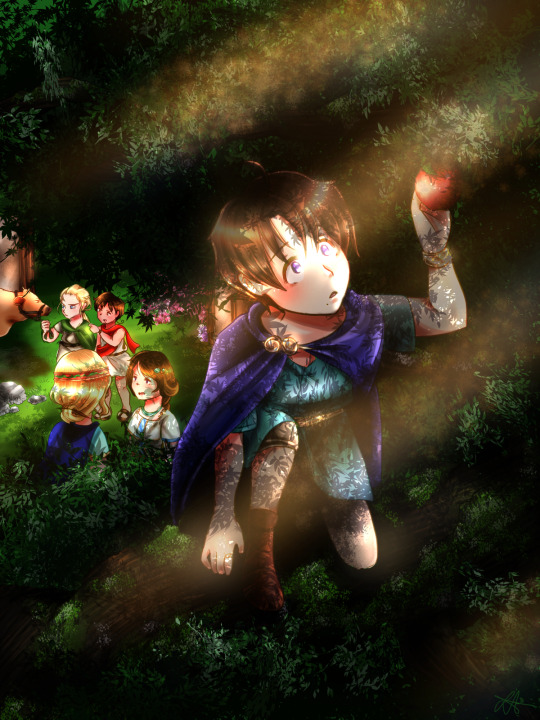


These drawings are already quite old but I made an OC for Austria's mom Noricum a while ago.
Basic information:
Name: Noricum (Celtic Kingdom & Roman Province)
Human name: Noreia
Age: 20s-30s
Birthday: somewhere around 200 BC when 13 tribes formed the Celtic kingdom of Noricum
Hair colour: brown
Eye color: purple (like her son's)
Family: Roderich (son), Germania (brother, that's why Roddy and Ludwig and Gilbert are cousins)
Likes: making jewellery, crafting, swords (bc they're cool), music, singing, dancing, swordfighting, luxury
Dislikes: arguing, being ordered around (cough Rome), her brother's stubbornness
Reason of d3ath:
-histocial: fall of the Roman empire as she was made a province and got romanized, so the province didn't quite survive long on its own
-symbolized within Hetalia: After disappearing in the forests she eventually dr0wned in the danube hence Roderich's deep rooted fear of aquatic animals, deep waters etc.
Headcanons and some history stuff:
-The name Noreia was taken from the Celtic mother godess and godess of mining called "Noreia". (The historical deity "Noreia" was probably sth the Roman came up with tho) Noreia is also the name of a "possible" "capital" (difficult situation there) of Noricum. As she's a personification and one of the first that existed around this area, her people probably treated her like a deity or a queen.
-Noricum is Austria's biological mother as she was the first "country-like" political system on nowadays Austrian ground. She is Germania's sister as we found out in Hetalia Collezione that Austria is a cousin to Germany and Prussia.
-Her birthplace is Hallstatt (because Hallstatt culture) in the south of Upper Austria. She and later on Roderich (who hasn't gained a nation status/name yet, he was merely Roderich, the son of Noricum)
-She had a close friendship with Rome. They met through trading. Rome was interested in her iron and gold and Noricum found a liking in Roman luxury. They became friends personally and economically. In 170 BC they had a formal tribe alliance called "hospitium publicum". Germania was quite sceptical of Noricum's and Rome's relationship.
-Around 49 BC, after the Caesar vs Pompeius stuff, Noricum was annexed by the Romans and became a Roman province. The annexion happened without bloodshed (usually wasn't the case) and she still had some sort of autonomy within the empire. But then the Noric people started to riot as their living condition started to worsen. That means the longer Noricum was actually around Rome the more they fought with each other.
-When Rome fell, she d!ed rather quickly as well. She appeared rather silent and triste and not like the usual quite lively woman she was before.
-After her death Austria was left with the Avars, Bavarians and Slavs that settled in the area, after king Odoaker kicked the Celtic-Roman population out from the area.
-Noricum's neighbours and friends were Pannonia and Raetia, both were female provinces. Noricum also lived with Illyria sometimes as Rome partitioned her into two parts.
-Her relationship with her brother was alright but they frequently argued. Siblings. She probably adored her nephews as well and coddled them just like she coddled Austria a bit too much.
-Despite not appearing like it from the outside, she was physically quite strong and good at swordfighting. Also, she liked to drink a lot.
-She had two horses from the Noriker race with the name Epona (horse godess, also because I like The Legend of Zelda lol) and Vibes (source deity). When Roderich grew older he learnt how to ride a horse and how to treat them. Epona became his horse.
-Noreia was a rather creative person and she sang a lot to and with her son. Roderich takes after her regarding his love for music.
-Roderich fell into the danube once and almost drowned and got bitten by some aquatic animals. Yeah that's it. That's the headcanon and Noricum had to pull him out of the water.
-After her death, Austria was brought to Germania and he cared for his nephew.
-A sad hc but: Austria probably forgot his mother for a long time due to many reasons (I still need to do research, I know where the book is that I wanna use as a source but I didn't have time yet) but when he finally remembered her he felt so unbelievably miserable and guilty about it because he definitely was a mama's boy growing up.
39 notes
·
View notes
Text
Namibia 2023/24 - Tag 1
Herrschaften und Oukies
Wir haben es tatsächlich geschafft! Wir sitzen im Flieger! Juchu! Namibia wir kommen!
Abflug ist wieder einmal ab Frankfurt, jedoch nicht mit Air Namibia, da diese wegen finanzieller Schwierigkeiten nicht mehr fliegt. Wir werden es dieses Mal mit Eurowings Discover versuchen. Wir sind gespannt!

Heute Nachmittag machten wir uns auf den Weg in Richtung Frankfurt. Wir fuhren frühzeitig los, denn bekanntlich ist die A 45 mit diversen maroden Brücken bestückt.
Seit nunmehr 2 Jahren ist die Autobahn A45 bei Lüdenscheid komplett gesperrt. Grund ist die Sperrung der Brücke Rahmede, an der im Dezember 2021 massive Schäden entdeckt wurden.
Der Verkehr der gesperrten Talbrücke Rahmede wird seit Dezember 2021 über Umleitungen durch das Stadtgebiet von Lüdenscheid geführt. Für den Verkehr und die Region hat das schwere Folgen. Entsprechend muss der Zeitbedarf auf der Strecke kalkuliert werden.

Gegen 17 Uhr kamen wir an unserer Lieblings-Raststätte Taunusblick an. Hier machen wir immer Rast, wenn nicht gerade irgend eine Pandemie die Republik lahm legt.
Wer auf der A5 in Richtung Frankfurt unterwegs ist, ist sicherlich schon an der Raststätte Taunusblick vorbeigedüst. Von der Raststätte hat man einen tollen Blick auf die Frankfurter Skyline!
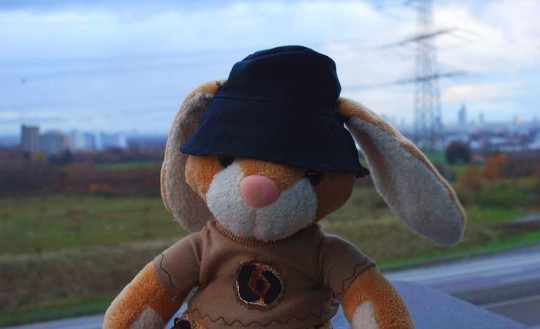
Wer die Strommasten nicht ignorieren kann, der dreht sich einfach um! Denn warum heißt der Taunusblick Taunusblick? Genau! Von der anderen Seite sieht man auf den Taunus. Ein Fernrohr zum Füttern mit Münzen ist auch vorhanden.
Unten kann man ins Restaurant gehen, einen Imbiss oder Kaffee einnehmen oder einfach weiterfahren. Das Restaurant hat übrigens nicht mehr diese Monitore für die aktuelle Ankünfte und Abflüge am Frankfurter Flughafen. Sehr schade, wir wussten diesen Service immer sehr zu schätzen!

Die Raststätte wurde ursprünglich von amerikanischen Streitkräften als Tankstelle betrieben und in den 2000er Jahren zu einer zivilen Anlage umgebaut und ausgebaut.
Die Nähe zum römischen Grenzwall Limes war für die Gestaltung des Turms ausschlaggebend. Für den hohen Stahlbau stand ein römischer Limes-Turm (Beobachtungsturm) Pate.

Der Begriff Limes bedeutete ursprünglich "Grenzweg" bzw. "Schneise" und bezeichnet einen von den Römern angelegten Grenzwall an den Reichsgrenzen. In Deutschland ist mit "Limes" der obergermanische und der raetische Limes gemeint. Die beiden Limesabschnitte sind nach den angrenzenden römischen Provinzen Germania Superior (Obergermanien) und Raetia (Rätien) benannt.
Der Limes ist gegen Ende des 1. Jahrhunderts n.Chr. errichtet worden. Mit seinen knapp 550 Kilometern Länge ist er das größte Bodendenkmal Mitteleuropas und ein eindrucksvolles Beispiel römischer Besitzansprüche. Es sollte eine klare Grenzlinie zwischen den römisch kontrollierten Provinzen und den Gebieten außerhalb des Imperium Romanum gezogen werden.
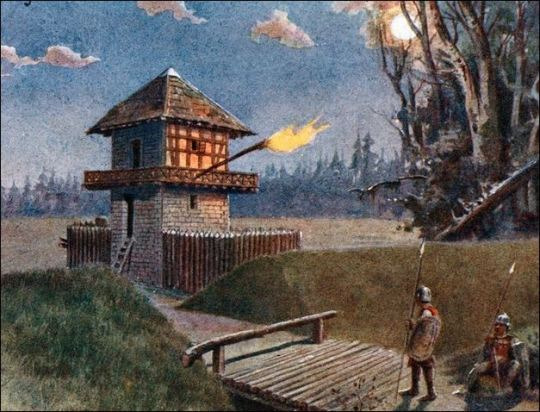
Insgesamt 900 Wachtürme mit einer Besatzung von bis zu acht Mann wurden entlang der Grenze aufgestellt. Die Besatzung der in Sichtweite voneinander aufgestellten Türme hatte die Aufgabe, mögliche Einfälle frühzeitig zu beobachten und mittels Rauchzeichen zu melden. Im Hinterland der Grenze wurden im Abstand von einigen Kilometern 120 kleinere und größere Kastellanlagen errichtet.
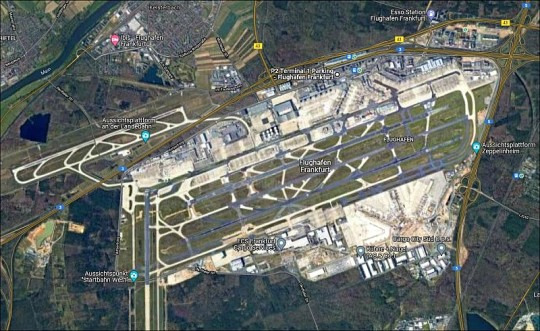
Nach weiteren 15 Minuten kamen wir am Frankfurter Flughafen. Dort hatten wir bereits frühzeitig im Parkhaus am Terminal 1, dem Hauptterminal, einen Parkplatz zum Frühbuchertarif reserviert.
Glücklicherweise waren die Schlangen an den Schaltern beim Check-in nicht sehr lang.
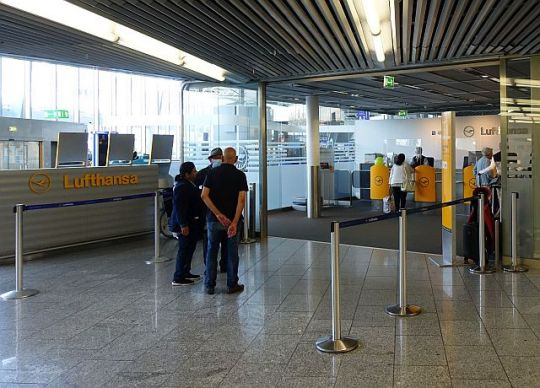
Wie immer haben die Business & First Class Gäste eigene Schalter. Da ist die Lage immer deutlich entspannter. Man ist freundlich und hilfsbereit.
Die Business Class war bis auf wenige Plätze komplett ausgebucht. Da waren wir doch erstaunt.

Wir richten uns ein, machen es uns gemütlich.
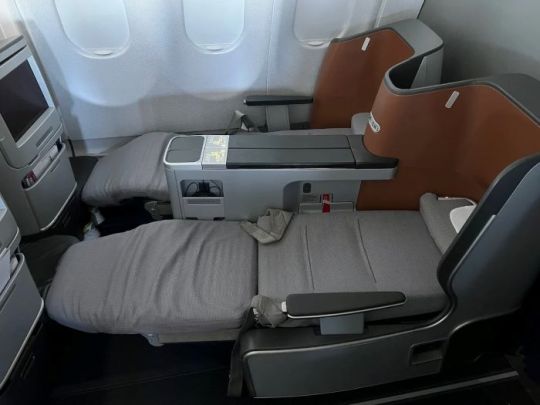
Und schaffen es tatsächlich auch ein paar Stunden zu schlafen.
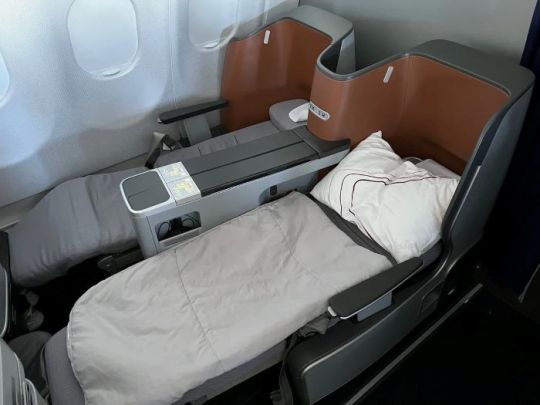
Frühstück gab es dann um kurz vor 8 Uhr, da waren wir noch über Angola. Gegen 10 Uhr landeten wir dann auf dem Flughafen von Windhoek.

Recht herzlichen Dank für die Aufmerksamkeit!
Angie, Micha, Mama und der Hasenbär
8 notes
·
View notes
Text
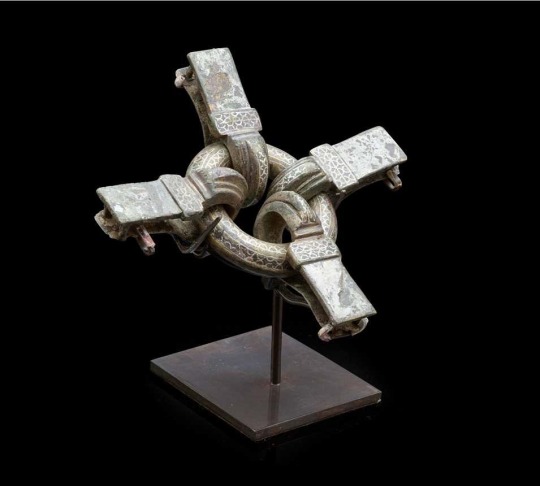
MEROVINGIAN PENDANT
WESTERN EUROPE, CIRCA 7TH CENTURY A.D.
Ncast metal ring with four loop straps
The Merovingian dynasty was the ruling family of the Franks from the middle of the 5th century until 751. They first appear as "Kings of the Franks" in the Roman army of northern Gaul. By 509 they had united all the Franks and northern Gallo-Romans under their rule. They conquered most of Gaul, defeating the Visigoths (507) and the Burgundians (534), and also extended their rule into Raetia (537). In Germania, the Alemanni, Bavarii and Saxons accepted their lordship. The Merovingian realm was the largest and most powerful of the states of western Europe following the breaking up of the empire of Theodoric the Great. Wiki
Lyon and Turnbull
15 notes
·
View notes
Text

ประเทศสวิตเซอร์แลนด์ (Switzerland)
ประเทศสวิตเซอร์แลนด์
สวิตเซอร์แลนด์ (อังกฤษ: Switzerland, เยอรมัน: die Schweiz, ฝรั่งเศส: la Suisse, อิตาลี: Svizzera, โรมานช์: Svizra) หรือชื่อทางการคือ สมาพันธรัฐสวิส (Swiss Confederation) เป็นประเทศเล็ก ๆ ที่ที่ไม่มีทางออกสู่ทะเล ปกครองแบบสหพันธ์ และตั้งอยู่ทวีปยุโรปกลาง โดยมีพรมแดนติดกับประเทศเยอรมนี ประเทศฝรั่งเศส ประเทศอิตาลี ประเทศออสเตรีย และประเทศลิกเตนสไตน์ นอกจากจะมีความเป็นกลางทางการเมืองแล้ว สวิตเซอร์แลนด์นับว่ามีการร่วมมือกันระหว่างประเทศเป็นอย่างมาก เนื่องจากเป็นที่ตั้งขององค์กรนานาชาติหลายแห่ง
Confoederatio Helvetica เป็นชื่อทางการของประเทศในภาษาละติน และหลีกเลี่ยงการใช้หนึ่งใน 4 ภาษาทางการ ซึ่งคำย่อ คือ CH ใช้เป็น โดเมนระดับบนสุดสำหรับอินเทอร์เน็ต (top level domain) เป็นต้น
ประวัติศาสตร์
ยุคก่อนประวัติศาสตร์
เมื่อ 10,000 ปีก่อนคริตสกาล พวกกลุ่มนักล่าสัตว์และกลุ่มคนเร่ร่อนได้ย้ายถิ่นฐานเข้ามาอยู่อาศัยในเขตทางตอนเหนือของเทือกเขาแอลป์ (Alp) ซึ่งในปัจจุบันก็คือพื้นที่บริเวณ Graubünden ใจกลางประเทศสวิสเซอร์แลนด์เป็นครั้งแรก ต่อมาก็ได้มีการขยายอาณาเขตออกไปเรื่อยๆ ตามพื้นที่บริเวณลุ่มทะเลสาบต่างๆ จนกระมั่งเมื่อประมาณ 400 ปีก่อนคริสตกาลชนเผ่าเซลท์ (Celt คือกลุ่มชนชาติที่พูดภาษาเซลติก) ได้เริ่มย้ายถิ่นฐานจากทางเยอรมันตอนใต้ เข้าไปสู่พื้นที่ลุ่มทะเลสาบในตอนกลางของประเทศสวิตเซอร์แลนด์เพิ่มมากขึ้น โดยทางด้านตะวันออกของสวิตเซอร์แลนด์เป็นที่อยู่อาศัยของพวก Raetia ส่วนทางด้านตะวันตกถูกครอบครองโดยชาว Helvetii นอกจากนั้นก็ยังมีชนเผ่าอื่นๆ ที่กระจัดกระจายไปตามส่วนต่างๆ ของประเทศสวิสเซอร์แลนด์อีกเป็นจำนวนมาก คือ ชนเผ่า Lepontier ทางแคว้น Tessin ชนเผ่า Seduner ในเขต Wallis และทะเลสาบเจนีวา
ต่อมาเมื่อเข้าสู่ยุครุ่งเรืองของอาณาจักรโรมันในประมาณ 58 ปีก่อนคริสตกาล ชนเผ่าโรมันภายใต้การนำของจูเลียส ซีซาร์ (Julius Caesar) ได้เข้าโจมตีและยึดดินแดนของชนเผ่า Helvetii และดินแดนส่วนอื่นๆ เข้าเป็นส่วนหนึ่งของอาณาจักรโรมัน ช่วงนี้เองที่ได้เริ่มที่การก่อสร้างถนนหนทางและระบบผังเมืองขึ้นในประเทศสวิตเซอร์แลนด์ขึ้นเป็นครั้งแรก เช่น ในบริเวณเมือง Basel, Chur, Geneve, Zurich ในปัจจุบัน โดยมีศูนย์กลางอยู่ที่เมือง Avenches
ในช่วงปลายของยุคสมัยโรมัน ประมาณปีคริตศตวรรษที่ 4 ถึง 6 ศาสนาคริสต์ได้เผยแผ่เข้ามาในเขตประเทศสวิตเซอร์แลนด์ ทำให้ได้มีการตั้งตำแหน่ง Bishop ขึ้นตามเมืองต่างๆ และเชื่อกันว่าอาณาจักรโรมันก็ล่มสลายลงในช่วงนี้เอง
หลังจากที่อาณาจักรโรมันค่อยๆเริ่มเสื่อมลง พวกชาวเยอรมันเผ่าต่างๆ ก็อพยพเข้ามาตั้งถิ่นฐานเข้ามาในเขตนี้แทน โดยชนเผ่า Burgundian เข้ามายึดครองบริเวณทางแถบ Jura ทางตอนเหนือของเทือกเขาแอลป์ บริเวณแม่น้ำ Rhðne และทะเลสาบเจนีวา ส่วนพวก Alamannic ได้ตั้งถิ่นฐานอยู่บริเวณลุ่มแม่น้ำไรน์ (Rhein) ส่วนการเผยแผ่ศาสนาก็ยังคงมีอยู่เรื่อยๆ โดยพระนักสอนศาสนาเข้ามามีบทบาทสำคัญในเขตเมืองต่างๆ รวมทั้งยังมีการสร้างวัดขึ้นเป็นครั้งแรกที่เมือง St. Gallen และ Zurich เมื่อเริ่มเข้าสู่ยุคโรมันอันศักดิ์สิทธิ์ (Holy Roman Empire ซึ่งอาณาจักรนี้เป็นอาณาจักรของจักรรรดิชาร์ลมาญแห่งเยอรมันหรือเรียกว่าเป็นอาณาจักรโรมันอันศักดิ์สิทธิ์แห่งชนชาติเยอรมัน ซึ่งไม่ได้เกี่ยวข้องกับอาณาจักรโรมันในสมัยยุคก่อนประวัติศาสตร์แต่อย่างใด) ก็ได้มีการนำระบบกฎหมายต่างๆ เข้ามาใช้ในประเทศสวิตเซอร์แลนด์ โดยมีการร่างสนธิสัญญา Verdun ขึ้นในปี ค.ศ. 834 โดยพื้นที่บริเวณตะวันตกของสวิตเซอร์แลนด์ (Burgundain) ตกอยู่ภายใต้การปกครองของกษัตริย์ Lothair ที่ 1 และทางด้านตะวันออก (Alamannic) อยู่ภายใต้การปกครองของกษัตริย์ Louis the German ในศตวรรษที่ 10 เมื่อระบบการปกครองแบบใช้กฎหมายเสื่อมลง พวกชนเผ่าแมกยาร์ (Magyar) ก็เข้ามาทำลายเมืองใหญ่ต่างๆ ของเผ่า Burgundian และ Alamannic แต่ต่อมาเมื่อกษัตริย์ Otto ที่ 1 ทำสงครามชนะพวกชนเผ่าแมกยาร์ในปี ค.ศ. 955 ก็มีการรวมพื้นที่บริเวณของ 2 ชนเผ่าเข้าด้วยกันเป็นส่วนหนึ่งของ Holy Roman Empire อีกครั้ง และยังได้มีการรวบรวมแคว้นต่างๆเข้าเป็นส่วนหนึ่งของอาณาจักรโรมันอันศักดิ์สิทธิ์ อาณาจักรนี้ถูกปกครองโดยราชวงศ์ฮับสบวร์ก (Habsburg dynasty) ไปจนกระทั่งกษัตริย์ Rudolph ที่ 1 แห่งราชวงศ์ฮับสบวร์กสิ้นพระชนม์เมื่อวันที่ 15 กรกฎาคม 1291
ยุคของอดีตสมาพันธรัฐสวิส
ช่วงที่ถือได้ว่าเป็นช่วงของการก่อตั้งประเทศสวิตเซอร์แลด์หรือประเทศสมาพันธรัฐสวิตเซอร์แลนด์อย่างเป็นทางการเริ่มขึ้นเมื่อวันที่ 1 สิงหาคม ค.ศ. 1291 เมื่อมณฑล 3 มณฑลในเขตเทือกเขาแอลป์ คือ Uri, Schwyz และ Unterwalden ได้รวมตัวกันขึ้นเป็นอดีตสมาพันธรัฐสวิส (Old Swiss Conferderation หรือที่เรียกเป็นภาษาเยอรมันว่า Alte Eidgenossenschaft) ซึ่งการรวมกลุ่มนี้ไม่ได้เพื่อต้องการแยกออกเป็นประเทศ แต่เพียงเพื่อต้องการจะต่อต้านอำนาจของราชวงศ์ฮับส์บวร์ก ซึ่งการรวมกลุ่มครั้งนี้ไม่ได้รับการยอมรับจากราชวงศ์ฮับส์บวร์กและมีการทำสงครามกันเรื่อยมา ในปี1315 กลุ่มของชาวบ้านที่เป็นทหารของสวิสในสมัยนั้นก็ทำสงครามชนะทหารของราชวงศ์ฮับส์บวร์กในสงคราม Morgaten หลังจากนั้นเมือง Zürich, Lucerne, Glarus, Zug และ Bern ก็ได้เข้าร่วมเป็นอดีตสมาพันธรัฐสวิส และได้มีการเรัยกชื่อกลุ่มการรวมตัวของมณฑล 8 มณฑลนี้ว่า Schwyz ภายหลังจากการรวมตัวนี้แล้ว ก็ยังคงมีการรวมตัวของมณฑลต่างๆ อยู่เรื่อยๆ จนเมื่อสิ้นสุดปี ค.ศ. 1513 ก็มีมณฑลเข้าร่วมทั้งหมด 13 มณฑล
ภายหลังจากที่มีการรวมตัวกันในปี 1513 แล้ว ก็ยังคงมีการทำสงครามกันภายในพื้นที่ของประเทศสวิตเซอร์แลนด์ในปัจุจบันอยู่เรื่อยๆ โดยส่วนใหญ่จะเป็นสงครามทางศาสนา แต่สงครามที่ยาวนานที่สุด คือ สงคราม 30 ปี (Thirty Years´War ค.ศ. 1618-1648) ซึ่งในช่วงแรกของสงครามนี้เป็นสงครามระหว่างศาสนาคริสต์นิกายคาธอลิกกับโปรแตสแตนท์ แต่ต่อมาสงครามได้ขยายวงกว้างไปเป็นสงครามการขยายอำนาจภายในทวีปยุโรป สงคราม 30 ปีสิ้นสุดลงเมื่อมีการประกาศสันติภาพ Peace of Westphalia และสืบเนื่องมาจาก Peace of Westphalia นี้เอง ประเทศสมาพันธรัฐสวิตเซอร์แลนด์ประกาศแยกตัวออกจากอาณาจักรโรมันอันศักดิ์สิทธิ์อย่างเป็นทางการในปี ค.ศ. 1648
ในยุคที่ราชวงศ์ของฝรั่งเศสเริ่มเข้ามามีบทบาทในประวัติศาสตร์ยุโรป กองทัพของนโปเลียน (Napolean Bonaparte) ก็เข้าครอบครองสวิตเซอร์แลนด์และสถาปนาเป็น Helvetic Republic ในปี ค.ศ. 1798 ทำให้ดินแดนของสวิตเซอร์แลนด์ถูกรวมเข้าไปเป็นส่วนหนึ่งของประเทศฝรั่งเศส ต่อมาในปี 1803 ภายใต้การปกครองของนโปเลียนได้มีการรวบรวมมณฑลต่างๆ ในสมาพันธรัฐสวิสอีกครั้งนอกจากนั้นยังได้สถาปนาเขต 6 เขต คือ ขึ้นเป็นมณฑลใหม่ ในปี 1815 ได้มีการสถาปนาสมาพันธรัฐสวิสขึ้นมาใหม่ ที่คองเกรสแห่งเวียนนา (Congress of Vienna) ขึ้น โดยมีการเพิ่มจำนวนมณฑลเข้าไปอีก 3 มณฑล ในคองเกรสนี้เองได้มีการลงนามให้ประเทศสวิตเซอร์แลนด์เป็นประเทศที่เป็นกลางทางการเมือง คือเป็นการประกาศว่าประเทศสวิตเซอร์แลนด์จะเป็นเส้นแบ่งเขตแดนไม่ให้มีการทำสงครามกันระหว่างฝรั่งเศส เยอรมัน และออสเตรีย และได้มีการประกาศใช้รัฐธรรมนูญในปี 1848 (Fereral Constitution) ซึ่งในรัฐธรรมนูญระบุให้เมือง Bern เป็นเมืองหลวงของสมาพันธรัฐ โดยมีภาษาที่ใช้เป็นภาษาทา��การ 3 ภาษา คือ ภาษาเยอรมัน ภาษาฝรั่งเศส และภาษาอิตาลี
ช่วงสงครามโลกครั้งที่ 1 และครั้งที่ 2
ในช่วงสงครามโลกครั้งที่ 1 และครั้งที่ 2 ประเทศสวิตเซอร์แลนด์ได้วางตัวเป็นกลางทางด้านการทหาร บทบาทสำคัญเพียงอย่างเดียวของประเทศสวิตเซอร์แลนด์ในสงครามโลกครั้งที่ 1 ก็คือการส่งสภากาชาดเข้ามาช่วยเหลือ เมื่อสงครามโลกผ่านพ้นไป กลิ่นอายแห่งสงครามกลับทำให้เศรษฐกิจของสวิตเซอร์แลนด์ตกต่ำลง และเริ่มฟื้นฟูขึ้นใหม่ในช่วงปี พ.ศ. 2473 (ค.ศ. 1930) ยุคนี้ยังเป็นยุคแห่งการถือกำเนิดของศิลปินชื่อดังอีกด้วย
ถึงแม้ว่าประเทศสวิตเซอร์แลนด์จะวางตัวเป็นกลางในช่วงสงครามโลกครั้งที่ 2 แต่สวิตเซอร์แลนด์กลับมีบทบาทสำคัญในทางด้านเศรษฐกิจ คือธนาคารของประเทศสวิตเซอร์แลนด์ได้กลายเป็นสถานที่เพื่อใช้แลกเปลี่ยนเงินผิดกฎหมายของพวกนาซีเยอรมัน
ยุคหลังสงครามโลกครั้งที่ 2
ภายหลังจากสงครามโลกครั้งที่ 2 สิ้นสุดลงในปี พ.ศ. 2488 (ค.ศ. 1945) ได้มีการก่อตั้งองค์การสหประชาชาติที่กรุงเจนีวา ประเทศสวิตเซอร์แลนด์ ประเทศหลายประเทศได้เข้าร่วมเป็นสมาชิกขององค์การสหประชาติแต่ประเทศสวิตเซอร์แลนด์ ซึ่งเป็นเจ้าบ้านกลับไม่ได้เข้าร่วมเป็นสมาชิกในสมัยแรก โดยองค์การสากลแห่งแรกที่สวิสเข้าร่วมเป็นสมาชิกภายหลังสงครามโลกครั้งที่ 2 คือองค์การ UNESCO ซึ่งเข้าร่วมในปี พ.ศ. 2491 (ค.ศ. 1948) ประเทศสวิตเซอร์แลนด์ตัดสินใจเข้าร่วมเป็นสมาชิกขององค์การสหประชาชาติเมื่อปี พ.ศ. 2545 (ค.ศ. 2002) ต่อมาในปี 2548 ประชาชนชาวสวิตเซอร์แลนด์ได้ทำการลงประชามติเพื่อให้ประเทศสวิตเซอร์แลนด์เข้าร่วมเป็นประเทศในสนธิสัญญาเช็งเก็น (Schengen Agreement)
ตามข้อกำหนดในสนธิสัญญาเช็งเก็น นักท่องเที่ยวที่มีใบอนุญาตเช็งเก็น (Schengen Visa) แบบมัลติเพิลของประเทศใดประเทศหนึ่งซึ่งเป็นสมาชิกของกลุ่มเช็งเก็นสามารถเดินทางเข้าออกประเทศอื่นๆ ในกลุ่มเช็งเก็นได้โดยไม่ต้องขอวีซ่าของประเทศนั้นๆ ปัจจุบันประเทศในกลุ่มเช็งเก็นมีด้วยกันทั้งหมด 26 ประเทศรวมทั้ง ประเทศเบลเยียม, ประเทศฝรั่งเศส, ประเทศอิตาลี, ประเทศลักเซมเบิร์ก, ประเทศเนเธอร์แลนด์, ประเทศเดนมาร์ก, ประเทศกรีซ, ประเทศโปรตุเกส, ประเทศสเปน, ประเทศเยอรมนี, ประเทศออสเตรีย, ประเทศฟินแลนด์, ประเทศสวีเดน, ประเทศนอร์เวย์, ประเทศไอซ์แลนด์, ประเทศมอลตา, สาธารณรัฐเช็ก, ประเทศเอสโตเนีย, ประเทศฮังการี, ประเทศโปแลนด์, ประเทศสโลวาเกีย, ประเทศสโลวีเนีย, ประเทศลัตเวีย, ประเทศลิทัวเนีย และ ประเทศโมนาโก
การเมือง
แต่ละ Canton มีรัฐธรรมนูญและ Cantonal Government ของตนเองโดยมีอิสระจากการบริหารราชการของส่วนกลาง อำนาจนิติบัญญัติของสมาพันธ์ฯ อยู่ที่รัฐสภาแห่งสมาพันธ์ (Federal Assembly) ซึ่งประกอบด้วยสภาแห่งชาติ (National Council) และสภาแห่งรัฐ (Council of States) ทั้งสองสภามีอำนาจหน้าที่เช่นเดียวกัน National Council ได้รับเลือกตั้งจากประชาชนโดยตรงมีจำนวน 200 คน แต่ละ Canton จะมีจำนวน ผู้แทนของตนมากน้อยตามจำนวนประชากร (1:34,000) แต่อย่างน้อยที่สุด แต่ละ Canton จะมีผู้แทน 1 คน Council of States มีจำนวนสมาชิก 46 คน โดยแต่ละ Canton มีผู้แทน 2 คน การดำเนินงานที่สำคัญของรัฐสภาแห่งสมาพันธ์ กระทำผ่าน standing committees ด้าน ต่าง ๆ อาทิ การคลัง การต่างประเทศ เศรษฐกิจ วิทยาศาสตร์และการวิจัย การทหาร สุขภาพและสิ่งแวดล้อม การคมนาคม พลังงาน ฯลฯ ในการบริหารราชการส่วนกลาง อำนาจบริหารจะอยู่ที่คณะรัฐมนตรีเรียกว่า the Federal Council ซึ่งมีสมาชิกเรียกว่า Federal Councillor (มนตรีแห่งสมาพันธ์) มีทั้งหมด 7 คน ทำหน้าที่ควบคุมบริหารงานในหน่วยงานระดับกระทรวง 7 แห่ง รัฐสภาแห่งสมาพันธ์เป็นผู้เลือกมนตรีแห่งสมาพันธ์ มีวาระดำรงตำแหน่ง 4 ปี และในจำนวนมนตรีแห่งสมาพันธ์ทั้ง 7 คน จะได้รับเลือกจากรัฐสภาแห่งสมาพันธ์ผลัดเปลี่ยนกันครั้งละหนึ่งคน เพื่อดำรงตำแหน่งประธานาธิบดีซึ่งมีวาระการดำรงตำแหน่ง 1 ปี โดยมีสถานะเป็น “the first among equals” ดังนั้น ประธานาธิบดีสวิสจึงไม่มีการเยือนต่างประเทศในฐานะ State Visit นับตั้งแต่ ค.ศ. 1959 เป็นต้นมา สวิตเซอร์แลนด์ได้ปกครองและบริหารโดยพรรคการเมืองหลัก 4 พรรค ได้แก่ พรรค Radical Democratic (RDP) พรรค Social Democratic Party (SDP) พรรค Christian Democratic People’s Party (CDP) และพรรค Swiss People’s Party (SVP) ซึ่งเป็นธรรมเนียมปฏิบัติว่า แต่ละพรรคจะได้รับจัดสรรตำแหน่งมนตรีของสมาพันธ์พรรคละ 2 คน ยกเว้น Swiss People’s Party ได้ 1 คน นอกจากนั้น ผู้จะดำรงตำแหน่งมนตรีแห่งสมาพันธ์จะมาจาก Canton เดียวกันเกิน 1 คนไม่ได้ และเป็น ธรรมเนียมว่าจะต้องมีผู้แทนจาก 3 Canton หลัก ได้แก่ Zurich, Berne และ Vaud แห่งละ 1 คน ลักษณะพิเศษของระบบประชาธิปไตยแบบสวิสคือ อำนาจสูงสุดในทางนิติบัญญัติมิได้อยู่ที่สภาแต่อยู่ที่ประชาชนโดยตรง เพราะตามรัฐธรรมนูญประชาชนมีสิทธิในการออกเสียงประชามติ (referendum) และการริเริ่ม (initiative) กล่าวคือ กฎหมายทุกฉบับที่ผ่านสภาแห่งสมาพันธ์แล้ว จะยังไม่มีผลบังคับใช้ เป็นกฎหมาย จะต้องรอให้ครบ 90 วันเสียก่อน ในระหว่างนั้นประชาชนจะมีสิทธิคัดค้านโดยจะต้องเข้าชื่อร่วมกัน ไม่น้อยกว่า 50,000 คน เพื่อให้มีการจัด referendum ส่วนอำนาจในการริเริ่มของประชาชนจะสามารถใช้ในการ แก้ไขรัฐธรรมนูญ โดยประชาชนต้องเข้าชื่อร่วมกันไม่น้อยกว่า 100,000 คน เพื่อให้ประชาชนทั้งประเทศลงประชามติ ด้านอำนาจตุลาการ ศาลชั้นต้นและศาลชั้นกลางจะเป็นศาลของมณฑล โดยใช้กฎหมาย สมาพันธ์ร่วมด้วย และประชาชนเป็นผู้เลือกตั้งผู้พิพากษาโดยตรง แม้แต่ผู้พิพากษาสมทบก็อาจเป็นบุคคลที่ประกอบอาชีพอื่น ๆ ที่ได้รับเลือกจากคนในท้องถิ่น ส่วนศาลฎีกาแห่งสมาพันธ์ (Federal Supreme Court) มี ที่ตั้งอยู่ที่เมืองโลซานน์ เพื่อเน้นการแบ่งแยกอำนาจจากรัฐบาลกลางที่กรุงเบิร์น ศาลฎีกาเป็นทั้งศาลแพ่งและศาลอาญา ประกอบด้วยผู้พิพากษาประมาณ 30 คน ที่ได้รับเลือกตั้งจากรัฐสภาแห่งสมาพันธ์
การแบ่งเขตการปกครอง
นับตั้งแต่ พ.ศ. 2391 (ค.ศ. 1848) สวิตเซอร์แลนด์ได้เริ่มใช้ระบบการปกครองประชาธิปไตยแบบรัฐสภา แต่มีลักษณะการรวมตัวของรัฐต่าง ๆ อยู่ภายใต้รัฐบาลกลาง เรียกว่า สมาพันธรัฐ
สมาพันธรัฐสวิสประกอบด้วย 26 รัฐ (cantons) ได้แก่
อาร์เกา
อัพเพนเซลล์อินเนอร์-โรเดิน
อัพเพนเซลล์เอาเซอร์-โรเดิน
บาเซิล-ชตัดท์
บาเซิล-ลันด์ชาฟท์
เบิร์น
ฟรีบูร์ก
เจนีวา (เชอแนฟว์)
กลารุส
เกราบึนเดิน
ชูรา
ลูเซิร์น
เนอชาแตล
นิดวัลเดิน
ออบวัลเดิน
ชาฟฟ์เฮาเซิน
ชวีซ
โซโลทูร์น
ซังท์กาลเลิน
ทูร์เกา
ทีชีโน
อูรี
วาเล
โว
ซุก
ซูริก (ซือริค)
รัฐเหล่านี้มีประชากรเป็นจำนวนระหว่าง 15,000 คน (รัฐอัพเพนเซลล์อินเนอร์-โรเดิน) และ 1,253,500 คน (รัฐซือริค) และมีขนาดพื้นที่ระหว่าง 37 ตารางกิโลเมตร (รัฐบาเซิล-ชตัดท์) และ 7,105 ตารางกิโลเมตร (รัฐเกราบึนเดิน) รัฐแต่ละแห่งจะมี เทศบาล (municipalities) รวมทั้งหมด 2,889 เขตเทศบาล
ชื่อต่อไปนี้เป็นเขตปกครองที่มีดินแดนของสวิตเซอร์แลนด์โอบล้อมอยู่: บือซิงเงิน (Büsingen) เป็นดินแดนของประเทศเยอรมนี และกัมปีโอเนดีตาเลีย (Campione d'Italia) เป็นดินแดนของประเทศอิตาลี
ภูมิศาสตร์
พื้นที่มากกว่า 70% เป็นเขตภูเขา คือ เทือกเขาแอลป์ มีแม่น้ำสำคัญ คือ แม่น้ำไรน์ แม่น้ำโรน แม่น้ำทิซิโน และแม่น้ำอิน ทรัพยกรธรรมชาติที่สำคัญมีเพียง หินแกรนิต หินปูน และหินที่ใช้ในการก่อสร้างเท่านั้น
เศรษฐกิจ
ภาวะเศรษฐกิจสวิตเซอร์แลนด์
ในช่วงคริสต์ศตวรรษที่ 19 - 20 ได้มีการปรับเปลี่ยนโครงสร้างเศรษฐกิจครั้งใหญ่ของสวิตเซอร์แลนด์ การจ้างงานในภาคเกษตรกรรมลดลงจากร้อยละ 60 ของปี พ.ศ. 2393 (ค.ศ. 1850) เหลือเพียงร้อยละ 30 ในปี พ.ศ. 2454 (ค.ศ. 1911) และตั้งแต่ปี พ.ศ. 2533 (ค.ศ. 1990) เป็นต้นมา มีแรงงานเพียงร้อยละ 5 ที่อยู่ในภาคเกษตรกรรม
ภาคอุตสาหกรรมเริ่มมีบทบาทตั้งแต่ปี พ.ศ. 2423 (ค.ศ. 1880) และภาคบริการเริ่มเข้ามาตั้งแต่ช่วงทศวรรษแรกของคริสต์ศตวรรษที่ 20 ภาวะเศรษฐกิจตกต่ำในช่วงปี พ.ศ. 2534 - 2539 (ค.ศ. 1991 - 1996) เป็นผลจากมาตรการทางการเงินที่เข้มงวด ของสวิตเซอร์แลนด์เองแ ละการชะลอตัวทางเศรษฐกิจของประเทศคู่ค้าหลักของสวิตเซอร์แลนด์
ในช่วงปี พ.ศ. 2540 - 2542 (ค.ศ. 1997 - 1999) สภาวะเศรษฐกิจสวิตเริ่มฟื้นตัวต่อเนื่องในอัตราร้อยละ 1.8 ต่อปี มาตรการต่างๆ เพื่อกระตุ้นการเติบโตทางเศรษฐกิจที่ธนาคารชาติสวิสนำมาใช้ทำให้ค่าของเงินฟรังก์สวิตลดลงเกือบร้อยละ 10 รวมทั้งสภาวะการเติบโตของเศรษฐกิจโลก เป็นปัจจัยที่เอื้อให้การส่งออกของสวิตเซอร์แลนด์เพิ่มขึ้น ในขณะเดียวกันภาวะการจ้างงานภายในประเทศที่เพิ่มขึ้นก็ช่วยให้การบริโภคภายในประเทศสูงขึ้นด้วย
แม้ว่าสวิตเซอร์แลนด์จะมีค่าจ้างแรงงานสูงเป็นอันดับสามของประเทศอุตสาหกรรมรองจากเดนมาร์กและนอร์เวย์ แต่เมื่อเทียบกับอัตราเงินเฟ้อที่ค่อนข้างต่ำ แรงงานที่มีคุณภาพสูง บวกกับต้นทุนทางสังคมที่ค่อนข้างต่ำ ทำให้สวิตเซอร์แลนด์ได้รับการจัดอันดับเป็นประเทศที่มีความสามารถทางการแข่งขันสูงสุดเป็นอันดับที่ 9 ของโลก ในปี พ.ศ. 2543 (ค.ศ. 2000)
ภาคบริการของสวิตเซอร์แลนด์มีการจ้างงานกว่าสองในสามของการจ้างงานทั้งหมด รายได้ประชาชาติกว่าสองในสามมาจากภาคบริการ ที่สำคัญได้แก่ ภาคบริการผู้ผลิต อาทิ บริการด้านการเงิน การประกันภัย ธุรกิจอสังหาริมทรัพย์ และอื่นๆ ที่เกี่ยวข้องซึ่งทำรายได้ถึงหนึ่งในสาม
ภาคบริการการจำหน่าย เช่น การค้า การขนส่ง การสื่อสารโทรคมนาคม
ภาคบริการสังคม เช่น สุขภาพ การศึกษา ภาคราชการ บริการด้านวัฒนธรรม และการพักผ่อน และ
ภาคบริการบุคคล (personal services) อาทิ การท่องเที่ยว บริการต่าง ๆ สำหรับครัวเรือน และบริการรายบุคคลอื่น ๆ
ภาคอุตสาหกรรมของสวิตเซอร์แลนด์ใช้เทคโนโลยีขั้นสูง แม้ประเทศจะมีขนาดเล็กแต่มีบริษัทข้ามชาติมากมายที่ตั้งอยู่ในสวิตเซอร์แลนด์ อาทิ ด้านอาหาร (Nestle) เวชภัณฑ์ (Novartis, Roche) วิศวกรรม (ABB) อุตสาหกรรมเครื่องจักรกล เคมีภัณฑ์ และเวชภัณฑ์ ทำรายได้จากการส่งออกสูงสุดของสวิตเซอร์แลนด์ การจ้างงานภาคอุตสาหกรรมกว่าครึ่งหนึ่งอยู่ในภาคการผลิตสินค้าพวกเครื่องจักรกล เครื่องไฟฟ้าและเครื่องเหล็ก การแข็งค่าของเงินฟรังก์ทำให้ภาคอุตสาหกรรมพยายามลดค่าใช้จ่ายโดยการพัฒนาผลผลิตให้มีคุณภาพสูงมากขึ้น อุตสาหกรรมเครื่องจักรกลของสวิตเซอร์แลนด์เป็นอุตสาหกรรมที่ดีที่สุดในโลก ปัจจุบันสวิตเซอร์แลนด์เป็นประเทศที่มั่งคั่งที่สุดประเทศหนึ่ง ในปี 2543 GDP ต่อหัว สูงถึง 33,464 ดอลลาร์สหรัฐ ซึ่งสูงเป็นที่สามของโลกรองจากญี่ปุ่น และสหรัฐอเมริกา การเติบโตทางเศรษฐกิจเพิ่มขึ้น��ากร้อยละ 1.5 ในปีก่อน เป็นร้อยละ 3.4 ใน2 543 ซึ่งเป็นอัตราสูงสุดในรอบสิบปี
ปี พ.ศ. 2543 เศรษฐกิจสวิสเติบโตสูงสุดนับตั้งแต่ปี พ.ศ. 2532 (ค.ศ. 1989) เป็นต้นมาเนื่องจากการขยายตัวของเศรษฐกิจโลก อัตราดอกเบี้ยที่ต่ำ และการอ่อนค่าเงินฟรังก์สวิส GDP ในปี 2543 มีอัตราร้อยละ 3.4 การส่งออกเพิ่มเป็นสองเท่าในขณะที่การนำเข้าก็เพิ่มสูงขึ้น การลงทุนเพิ่มเป็นร้อยละ 10.3 (เทียบกับร้อยละ 9 ของปี 2542) ส่วนอัตราการว่างงานลดลงจากร้อยละ 2.7 เป็นร้อยละ 2 อัตราเงินเฟ้อร้อยละ 1.6
กระทรวงการคลังรายงานว่า ในช่วงแปดเดือนแรกของปี ค.ศ. 2001 การส่งออกเพิ่มขึ้นร้อยละ 5 คิดเป็นมูลค่า 88,533 ล้านฟรังก์ และนำเข้าเพิ่มขึ้นร้อยละ 2.4 คิดเป็นมูลค่า 88,719 ฟรังก์ ขาดดุลการค้า 90.5 ล้านฟรังก์ อัตราการว่างงานอยู่ที่ร้อยละ 1.7 ซึ่งถือว่าอยู่ในเกณฑ์ที่ต่ำเมื่อเทียบกับปีที่ผ่านมา5 5 5
การคาดการณ์สภาวะเศรษฐกิจปี พ.ศ. 2543
ธนาคาร UBS ประเมินว่า เศรษฐกิจสวิสจะเติบโตร้อยละ 1 ในปี ค.ศ. 2002 แต่สมาพันธรัฐสวิสจะไม่ตกอยู่ในภาวะเศรษฐกิจถดถอยเหมือนช่วงครึ่งแรกของปี ค.ศ. 2001 ทั้งนี้ เป็นผลจากนโยบายและการดำเนินการอย่างมีประสิทธิภาพและทันการณ์ของธนาคารชาติสวิสและเนื่องจากตลาดแรงงานมีความยืดหยุ่นสูง ในไตรมาสที่สองของปี ค.ศ. 2001 GDP ของสมาพันธรัฐสวิสเติบโตร้อยละ 1.7 โดยเฉลี่ยการเติบโตในแต่ละไตรมาสอยู่ประมาณร้อยละ1.5 – 2 ซึ่งสูงกว่าเยอรมนี (-0.1) ฝรั่งเศส (1) และอิตาลี (0.1) แต่ตัวเลขการ เติบโตในครึ่งแรกของปี ค.ศ. 2001 และดัชนีต่างๆ ชี้ว่าการเติบโตเริ่มช้าลง ค่าใช้จ่ายในการลงทุนเริ่มลดลงในไตรมาสที่สองเนื่องจากเศรษฐกิจโลกชะลอตัว ค่าเงินฟรังก์สวิสสูงขึ้นและกำลังซื้อของผู้บริโภคภายในประเทศเพิ่มในอัตราที่ต่ำ UBS คาดว่าปี ค.ศ. 2002 การเติบโตทางเศรษฐกิจจะเหลือเพียงร้อยละ 1 และอัตราเงินเฟ้อปี ค.ศ. 2002 จะเท่ากับร้อยละ 1 เพราะปัจจัยต่างๆ อาทิ ราคาสินค้าจะไม่สูงขึ้นมาก อัตราดอกเบี้ยที่ลดลง อัตราการเพิ่มค่าจ้างแรงงานก็จะช้าลง และเงินฟรังก์สวิสที่แข็งค่าขึ้นจะช่วยลดผลกระทบจากราคาสินค้าเข้าที่เพิ่มขึ้น
การค้าระหว่างประเทศและการลงทุน สวิตเซอร์แลนด์ขาดแคลนทรัพยากรธรรมชาติ พื้นที่ 2 ใน 3 ของประเทศเป็นภูเขา เพียง 1 ใน 4 ของพื้นที่ทั้งหมดเท่านั้น ที่สามารถทำการเพาะปลูก ซึ่งผลิตผลการเกษตรสามารถรองรับความต้องการด้านอาหารของประเทศได้เกินกว่าครึ่งหนึ่ง แต่สวิสขาดแคลนวัตถุดิบ จึงต้องนำเข้าวัตถุดิบและส่งออกกลับไปในรูปของผลิตภัณฑ์คุณภาพ จึงต้องนำเข้าสินค้าและวัตถุดิบ คู่ค้าสำคัญของสวิตเซอร์แลนด์ได้แก่สมาชิกองค์การความร่วมมือทางเศรษฐกิจและการพัฒนา (Organization for Economic Cooperation and Development – OECD) เศรษฐกิจสวิสผูกพันกับเศรษฐกิจ ยุโรปอย่างมากโดยเฉ��าะเยอรมนี สวิตเซอร์แลนด์นำเข้าจากสหภาพยุโรปร้อยละ 63 (เยอรมนีร้อยละ 23) และส่งออกไปสหภาพยุโรปกว่าร้อยละ 80 (เยอรมนีร้อยละ 33) สวิตเซอร์แลนด์ขาดดุลการค้าตลอดมาเว้นแต่ในช่วงเศรษฐกิจชะลอตัวช่วงทศวรรษ 1960 ซึ่งส่งผลให้การนำเข้าลดลง แม้ว่าสวิตเซอร์แลนด์จะขาดดุลการค้ากับประเทศอุตสาหกรรมส่วนใหญ่ของยุโรป (ยกเว้นอังกฤษ) แต่สวิตเซอร์แลนด์ได้ดุลการค้าจากประเทศที่พัฒนาน้อยกว่าเช่น สเปน โปรตุเกส และประเทศกำลังพัฒนา เครื่องจักรกล อุปกรณ์ไฟฟ้า เคมีภัณฑ์ ผลิตภัณฑ์ทางเวชกรรม นาฬิกา และอัญมณี เป็น สินค้าส่งออกหลักของสวิตเซอร์แลนด์ สินค้านำเข้าหลักได้แก่เครื่องจักรกล อุปกรณ์ไฟฟ้า นาฬิกา เคมีภัณฑ์ ผลผลิตทางการเกษตร โลหะ สิ่งทอ และเครื่องแต่งกาย ซึ่งแสดงให้เห็นว่าสวิตเซอร์แลนด์เป็นประเทศที่นำเข้าวัตถุดิบโดยใช้แรงงานที่มีคุณภาพสูงของตนแปรรูปให้เป็นสินค้าอุตสาหกรรมที่มีมูลค่าสูง การส่งออกภาคบริการของสวิตเซอร์แลนด์ในช่วงปี 1996-1999 เพิ่มประมาณร้อยละ 6.5 ต่อปี โดยมีสัดส่วนร้อยละ 20 ของการส่งออกทั้งหมด การท่องเที่ยวก็เป็นส่วนสำคัญของอุตสาหกรรมบริการ สวิตเซอร์แลนด์ได้ดุลบัญชีเดินสะพัดเป็นสัดส่วนต่อรายได้ประชาชาติสูงสุดของโลก การ ได้ดุลจำนวนมากนี้เป็นผลจากการทำธุรกรรมด้านบริการ โดยเฉพาะภาคการเงิน บริษัทสวิสลงทุนในต่างประเทศมากกว่าบริษัทต่างประเทศมาลงทุนในสวิตเซอร์แลนด์ประมาณ 2.5 เท่า การลงทุนทางตรงของสวิตเซอร์แลนด์ในต่างประเทศส่วนใหญ่อยู่ในสหภาพยุโรปและ สหรัฐอเมริกา ในขณะที่สหภาพยุโรปมีสัดส่วนการลงทุนในสวิตเซอร์แลนด์เป็นสองในสามของการลงทุน ต่างประเทศในสวิตเซอร์แลนด์
นโยบายต่างประเทศของสวิตเซอร์แลนด์
ก่อนปี ค.ศ. 1980 นโยบายต่างประเทศของสวิตเซอร์แลนด์ยึดหลักการ 4 ประการ คือ ความ เป็นกลาง (neutrality) ความมีน้ำหนึ่งใจเดียว (solidarity) ความเป็นสากล (universality) และความเป็นประโยชน์ต่อส่วนรวม (availability) ต่อมาเมื่อกิจการต่างประเทศเริ่มมีส่วนเกี่ยวพันกับกิจการสาขาอื่น ๆ โดยเฉพาะเศรษฐกิจ การเงิน สิ่งแวดล้อม และกฎหมาย และการที่โลกเข้าสู่ยุคโลกาภิวัฒน์และหน่วยงานหรือ องค์กรต่าง ๆ ได้เริ่มมีบทบาทในกิจการต่างประเทศมากขึ้น ทำให้สวิตเซอร์แลนด์ต้องปรับเปลี่ยนนโยบายการต่างประเทศ และได้จัดทำสมุดปกขาวว่าด้วยนโยบายต่างประเทศสวิตเซอร์แลนด์ในศตวรรษที่ 90 ซึ่งได้รับ ความเห็นชอบจากรัฐบาลในปี ค.ศ. 1993 นโยบายต่างประเทศของสวิตเซอร์แลนด์สำหรับปี 2545 สรุปได้ดังนี้
การเข้าเป็นสมาชิกองค์การสหประชาชาติ
สวิตเซอร์แลนด์ให้ความสำคัญลำดับแรกต่อการเข้าเป็นสมาชิกองค์การสหประชาชาติ ขณะนี้รัฐบาลได้เร่งรณรงค์ให้ประชาชนเข้าใจและตระหนักถึงความสำคัญขององค์การสหประชาชาติ ในส่วนของพรรคร่วมรัฐบาลทั้งสี่พรรค ได้ให้ความเห็นชอบต่อการเข้าเป็นสมาชิกดังกล่าว และได้จัดการลงประชามติทั่วประเทศในวันที่ 3 มีนาคม 2545 โดยก่อนหน้านั้นเมื่อเดือนมีนาคม ค.ศ. 1986 รัฐบาลสวิตเซอร์แลนด์ได้จัดการลงประชามติการเข้าเป็นสมาชิกสหประชาชาติ แต่ประชาชนสวิสส่วนใหญ่ไม่เห็นด้วยเนื่องจากเกรงจะเสียความเป็นกลางซึ่งเป็นนโยบายหลักของประเทศตลอดมา แต่ในการลงประชามติเมื่อวันที่ 3 มีนาคม ค.ศ. 2002เสียงส่วนใหญ่ของประชาชนสวิสและเสียงส่วนใหญ่ของรัฐ (Canton) ได้ลงมติให้ความเห็นชอบการเข้าเป็นสมาชิกสหประชาชาติของสมาพันธรัฐสวิส โดยผู้ลงมติเห็นด้วยคิดเป็นร้อยละ 54.61 ผู้ลงมติไม่เห็นด้วยร้อยละ 45.39 และรัฐ (Canton) ที่เสียงส่วนใหญ่เห็นด้วยมีจำนวน 12 รัฐ จากจำนวนรัฐ ทั้งหมด 23 รัฐ การลง ประชามติครั้งนี้มีประชาชนออกมาใช้สิทธิร้อยละ 57.7 ทั้งนี้ สมาพันธรัฐสวิสได้ยื่นใบสมัครเข้าเป็นสมาชิก สหประชาชาติอย่างเป็นทางการและได้เข้าเป็นสมาชิกองค์การสหประชาชาติในช่วงการประชุมสหประชาชาติสมัยสามัญ ครั้งที่ 57 ในเดือนกันยายน ค.ศ. 2002
การเจรจาทวิภาคีกับสหภาพยุโรป
รัฐบาลสวิสชุดปัจจุบันได้ประกาศเป็นนโยบายแน่ชัดที่จะเข้าไปมีบทบาทในเวทีการเมืองระหว่างประเทศให้มากขึ้น อาทิ การจะเข้าเป็นสมาชิกสหประชาชาติ และการพยายามจะสมัครเข้าเป็นสมาชิกสหภาพยุโรป เนื่องจากเห็นว่า สวิตเซอร์แลนด์จะไม่สามารถอยู่อย่างโดดเดี่ยวได้อีกต่อไป ในปี ค.ศ. 1992 สวิตเซอร์แลนด์ได้จัดการลงประชามติเกี่ยวกับการเข้าเป็นสมาชิกเขตการค้าเสรียุโรป (European Economic Area) แต่ไม่ได้รับความเห็นชอบ รัฐบาลจึงหาทางออกโดยการเปิดการเจรจากับสหภาพยุโรปตั้งแต่เดือนธันวาคม ค.ศ. 1994 เพื่อทำความตกลงทวิภาคีใน 7 สาขา คือ การเคลื่อนย้ายบุคคลและแรงงานเสรี การวิจัย การขนส่งทางบก การบิน การเปิดเสรีทางการค้า การให้สิทธิภาคเอกชนของประเทศสหภาพยุโรปและ
สวิตเซอร์แลนด์เข้าไปประมูลหรือดำเนินกิจกรรมที่เป็นการจัดซื้อโดยรัฐในอีกประเทศหนึ่งได้เท่าเทียมคนชาติ การลดอุปสรรคการค้าระหว่างกัน และเมื่อวันที่ 21 มิถุนายน ค.ศ. 1999 สวิตเซอร์แลนด์และสหภาพยุโรปได้ ลงนามความตกลงดังกล่าวซึ่งสภาแห่งชาติของสวิตเซอร์แลนด์ได้ให้สัตยาบันความตกลงฯ เมื่อวันที่ 8 ตุลาคม ค.ศ. 1999 และผ่านการลงประชามติจากประชาชนร้อยละ 62.7 เมื่อวันที่ 21 พฤษภาคม ค.ศ. 2000 รวมทั้งได้ผ่านการให้สัตยาบันจากรัฐสภาเบลเยี่ยมเป็นประเทศสมาชิกสหภาพยุโรปประเทศสุดท้ายแล้วเมื่อเดือนธันวาคม ค.ศ. 2001 ซึ่งหลังจากนั้น รัฐบาลสวิตเซอร์แลนด์ได้เริ่มการเจรจาทวิภาคีกับสหภาพยุโรปอีก 10 สาขา คือ การบริการ การจ่ายเงินบำนาญ การแปรรูปสินค้าเกษตร สิ่งแวดล้อม สถิติ การศึกษา กิจการเยาวชน บัญชีเงินฝากธนาคาร ความร่วมมือเพื่อต่อต้านการฉ้อโกง และความร่วมมือด้านการศาสนา กิจการตำรวจและการอพยพย้ายถิ่นฐาน อย่างไรก็ตาม มีกระแสเรียกร้องให้เปิดการเจรจากับสหภาพยุโรปโดยทันทีเพื่อเร่งรัดการเข้าเป็นสมาชิกสหภาพยุโรปของสวิตเซอร์แลนด์ ซึ่งรัฐบาลสวิสไม่เห็นด้วยกับข้อเรียกร้องนี้ เนื่องจากเห็นว่า สวิตเซอร์แลนด์จะพร้อมเปิดการเจรจากับสหภาพยุโรปในช่วงระหว่างปี 2004-2007 และอาจพร้อมที่จะเข้าเป็นสมาชิกสหภาพยุโรปหลังปี 2010 แต่เมื่อมีประชาชน 100,000 คน เข้าชื่อเรียกร้องให้จัดการลงประชามติ รัฐบาลสวิสก็ได้จัดการลงประชามติขึ้นเมื่อวันที่ 4 มีนาคม 2001 ผลปรากฏว่าประชาชนกว่าร้อยละ 76.7 ลงคะแนนไม่เห็นด้วย ซึ่งส่วนใหญ่ผู้สนับสนุนการเปิดการเจรจากับสหภาพยุโรป จะเป็นชาวสวิสในเขตสวิส ฝรั่งเศส ในขณะที่ชาวสวิสเยอรมันเกินร้อยละ 85 ลงคะแนนไม่เห็นด้วย
ความสัมพันธ์ทวิภาคีสวิตเซอร์แลนด์กับประเทศเอเชีย-แปซิฟิก
รัฐบาลสวิตเซอร์แลนด์ให้ความสำคัญต่อการพัฒนาความร่วมมือกับประเทศเอเชียแปซิฟิก ทั้งในด้านการเมือง เศรษฐกิจ และได้เริ่มมิติใหม่ต่อการพัฒนาความร่วมมือด้านเทคโนโลยี แต่ นาย Deiss ได้ยอมรับว่ารัฐบาลสวิตเซอร์แลนด์มีบทบาทแข็งขันในการช่วยเหลือพัฒนาประเทศเอเชียใต้ เช่น ปากีสถาน เนปาล ภูฐาน อินเดีย บังคลาเทศ และเอเชียกลาง เช่น คีร์กิซสถาน ซึ่งความช่วยเหลือส่วนใหญ่จะทำในกรอบความร่วมมือพหุภาคีภายใต้องค์การระหว่างประเทศ และมีกลุ่มผู้เชี่ยวชาญในสาขาต่างๆ (pool of experts) กว่า 600 คน ซึ่งพร้อมจะเดินทางไปให้ความร่วมมือช่วยเหลือด้านเทคโนโลยี สำหรับอัฟกานิสถานนั้น สวิตเซอร์แลนด์เข้าไปมีบทบาททั้งในการเจรจาด้านการเมืองและได้มอบความช่วยเหลือด้านมนุษยธรรมผ่านสำนักงานข้าหลวงใหญ่ผู้ลี้ภัยแห่งสหประชาชาติ (UNHCR) และองค์การกาชาดสากล (ICRC) เป็นมูลค่ากว่า 17 ล้านฟรังค์สวิสในปี ค.ศ. 2001 โดยให้ความสำคัญกับการ ช่วยเหลือฟื้นฟูประเทศและการยกระดับความเป็นอยู่ของสตรี แต่จะไม่เข้าร่วมในกองกำลังรักษาสันติภาพ และในครึ่งแรกของปี ค.ศ. 2002 สวิตเซอร์แลนด์กำหนดจะเปิดสำนักงานติดต่อ (coordination Office) ที่กรุงคาบูล แต่ในขณะนี้ยังใช้ช่องทางการติดต่อผ่านสถานเอกอัครราชทูตสวิตเซอร์แลนด์ประจำปากีสถาน
ประชากร
ประชากร 7.5 ล้านคน (ปี 2549) เป็นชาวสวิส เยอรมันร้อยละ 65 สวิสฝรั่งเศสร้อยละ 18 สวิสอิตาเลียน ร้อยละ 10 โรมานช์ ร้อยละ 1 อื่น ๆ ร้อยละ 6
วัฒนธรรม
ประชาชนร้อยละ 48 นับถือนิกายโรมันคาทอลิก ร้อยละ 44 นับถือนิกายโปรเตสแตนท์ ร้อยละ 8 นับถือศาสนาอื่นๆหรือมิได้นับถือศาสนา
2 notes
·
View notes
Text
9-Euro-Ticket-Tours: im Blauen Land
9-Euro-Ticket-Tours: im Blauen Land
Mein nächste Ziel führt einen grünen Lindwurm im Wappen. Der soll nämlich dort sein Unwesen getrieben haben und dort zahlreiche Schafe, Kälber und Jungfrauen verschlungen haben. Nach dem Mahle nahm er im nahen See ein Bad, trank sich am Seewasser satt und verzog sich auf seine Insel. Der Kaiser lobte eine große Belohnung für denjenigen aus, der dem Untier der Gar ausmachen könnte: zum Ritter, gar…
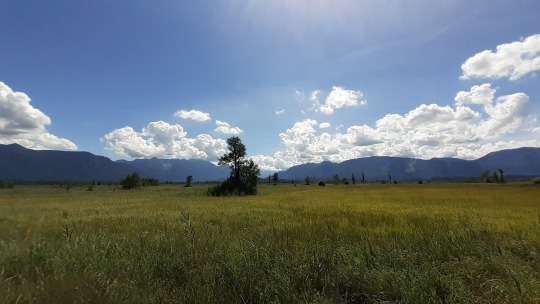
View On WordPress
#9-Euro-Ticket#August Macke#Ähndl#Blauer Reiter#das blaue Land#Drache#Franz Marc#Gabriele Münter#Kaffeelust#Kottmüller#Kottmüller-Allee#Lindwurm#Münter-Haus#Murnau#Murnau am Staffelsee#Murnauer Kaffeerösterei#Russenhaus#Septimius Severus#Staffelsee#Via Raetia#Wassily Kandinsky
0 notes
Text
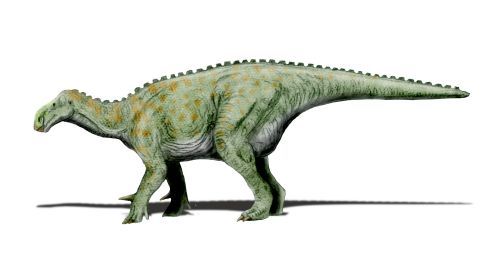
Fresco from a late antique villa (the so-called "House of the Deceiver") at Dura-Europos, depicting the obscure Roman emperor Marcus Gaius Lucius Titus Caesar (r. 254 CE), known to historians by his nickname "Maxipollex". Originally an army commander in the province of Raetia, Maxipollex claimed the throne during the so-called "third-century anarchy" by virtue of his exceptionally large thumbs, which made him easy to spot when signaling life or death to gladiators in the arena. Though he proved popular with Senate and people alike, Maxipollex's reign ended after just three months, when he poked his own eye out while shaving and was forced to abdicate.
31 notes
·
View notes
Photo

Legions of Noricum, Raetia & Dacia
The provinces Noricum, Raetia, and Dacia served as a buffer protecting Roman Empire against any possible outside threat. However, the region posed several internal problems for Rome: Pannonia and its ally Dalmatia rebelled against Roman occupancy, causing a three-year war, and Moesia was invaded by the Dacians during the reigns of both Domitian (r. 81-96 CE) and Trajan (r. 98-117 CE).
Lastly, during the 2nd and 3rd centuries CE, the region was repeatedly invaded by the Goths, Alemanni, and Marcomanni. While Noricum, Raetia, and Dacia provided a buffer between Rome and the Germanic tribes to the north, in time, they succumbed to the invaders they were supposed to keep out.
The Province of Noricum
Located in the eastern Alps between Raetia and Pannonia, its ideal location south of the Danube and rich deposits of iron ore and gold made Noricum a valuable asset to the coffers of the Roman Empire. The discovery of gold in the 2nd century BCE had drawn Roman settlers into the region only to be quickly expelled by the native Taurisci. However, Roman merchants continued to conduct business through small trading settlements. Always viewed as an ally, the region was finally conquered in 16 BCE during the reign of Roman emperor Augustus (r. 27 BCE to 14 CE). However, unlike other provinces, it did not receive a legion of its own – Legio Italica II – until the reign of Marcus Aurelius (161-180 CE). The province was later divided into two – Noricum Ripensis and Noricum Mediterranean – by Diocletian (284-305 CE). It was invaded by northern Germanic tribes and abandoned in the 5th century CE.
Continue reading...
25 notes
·
View notes
Video
701 at Bergün por Alan Mitchell
Por Flickr:
RhB Ge6/6 II 701 "Raetia" at Bergün with a Chur - St.Moritz service.
2 notes
·
View notes
